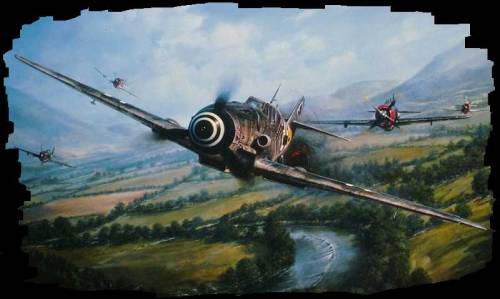Pilots from nations rapidly overrun often were able to join the Allies and thus fight for the war’s duration—and run up higher scores. The French allowed pilots to include probable kills, unlike other nations. Russia provided the only female fighter aces—and by the end of the war more than 150 Russian pilots claimed scores of at least 20 (50 had 30 or more). Germany enjoyed more than 100 aces who gained more than 100 victories each (most from the Eastern Front)—and 35 had more than 200 each for the highest counts of aces in any war. Werner Mölders (Germany) was the first ace from any country to exceed 100 kills. Heinz Bär (Germany) became the first jet ace with 16 confirmed victories.
It is an accepted figure to use 5 aerial victories as the figure for an “ACE”. This was established in the First World War.
There has always been suspicion on the number of victories achieved in World War II by the German fighter pilots. I believe the figures and they are as accurate as those recorded by any air force from any conflict. It is true that the Luftwaffe did not use shared victories as did the US but the figure of 5 was still the total required to become an ACE.
I believe a better comparison to be made is the victories versus number of sorties flown. I believe the reason Hartmann [352 victories] and Barkhorn [301 victories] had such high figures is they flew far more sorties than did the American pilots. The Germans flew multiple sorties each day, day after day until they were killed, wounded or captured. This fact continued for the entire war. One good comparison to be made is number of sorties to reach a certain victory count. If you take Molders and Hartmann and compare to Robert Johnson [an American ace in Europe] you find the following results:
Molders:
1 victory at 6th sortie
5 victories at 53rd sortie
10 victories at 78th sortie
20 victories at 116th sortie
28 victories at 142nd sortie
50 victories at 204th sortie
Hartmann:
1 victory at 19th sortie
5 victories at 68th sortie
10 victories at 120th sortie
20 victories at 184th sortie
28 victories at 194th sortie
50 victories at 251st sortie
100 victories at 309th sortie
Johnson:
1 victory at 11th sortie
5 victories at 43rd sortie
10 victories at 54th sortie
20 victories at 73rd sortie
28 victories at 91st sortie
Johnson was withdrawn from combat after his 100th sortie and never flew in combat again.
Barkhorn for example flew 1800 sorties in the war of which 1104 were aerial combat sorties. This means he had 1 victory every 5.98 sorties [1800/301] or 1 victory every 3.67 combat sorties [1104/301]. If you look at Johnson he had 1 victory for every 3.57 sorties [100 /28].
I believe Hartmann flew 800 + sorties meaning that he scored a victory every 2.27 + sorties. A remarkable figure.
I feel that all nations have certain individuals that rise to become superior fighter pilots and all of these individuals are much alike in their abilities.
What I find remarkable is that Hartmann and Barkhorn and other leading German fighter pilots managed to survive the war.
There are several reasons for high Luftwaffe scores. Firstly, many of the great German aces were in combat for most of the period 1939 to 1945; Kozehedub did not fly his first combat mission until March of 1943. Similarly, Bong (40 kills) was rotated into non-combat positions, at least in part to ensure he did not get killed, which would have been bad for morale and propaganda reasons. In general, German aces flew until they were shot down, while Western Allied aces had rotation schemes to keep them from getting “burned out” in combat. This means that the Germans had more time to run up these huge scores.
Another reason is the way the kills were credited; in the Luftwaffe, there were no “Half-Kills” like in the USAAF or other means of scoring “partial kills”; one man would get the whole credit, even if several individuals were involved. I believe the Luftwaffe gave credit to the highest-ranking individual involved; this tends to concentrate the scores in the aces, at the expense of their comrades.
The defensive role of the Luftwaffe played some part, especially in the fight against the Western Allies; a US or British pilot shot down on a raid over occupied France or the Reich had his career terminated; a Luftwaffe pilot forced to use his parachute could be back in action the same day.
A very large part of many German scores was earned in the “turkey shoot” of the early part of Operation Barbarossa, where the Soviet bombers were flung with the greatest courage, but without much hope of survival, against the invaders. In the first few months of the war, thousands of SB’s, SU-2’s, R-5’s and other obsolete and obsolescent types ran German scores up rapidly.
As for the rest, were the Luftwaffe good? Yes, of course they were very good. There is no mysterious or ethnic reason for it; they had been practicing since the Spanish Civil War, first in Spain, then against the Poles, then against the British and French, and finally the British alone. They had a vast well of experience by the start of Barbarossa to draw on, a good organization, and lots of first rate aircraft. It would have been surprising if they had NOT been good
Here’s an example: Johnnie Johnson was extremely skeptical of Luftwaffe claims. After the war, he was able to examine Josef Priller’s logbook and compare it to RAF/USAAF logs. EVERY SINGLE KILL was collaborated by the allied logs, all 101 of them. This was typical for his unit, JG-26, which, incidentally, shot down enemy planes at a rate of approx. 3:1 over the course of the war – over 9:1 in 1940 and 1941. Again, allied records can confirm almost all of these.
